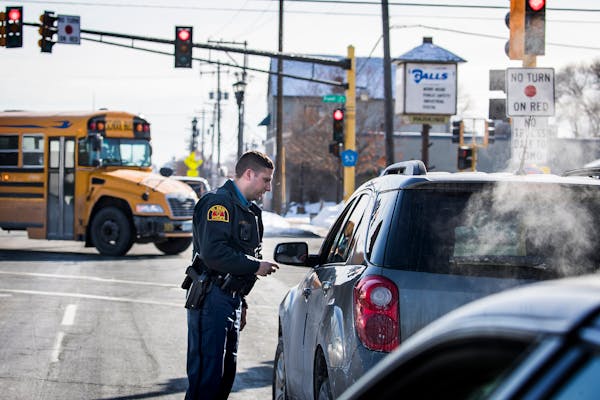In last week's column about speeding, I asked readers to share their thoughts, and more than 200 did.
An overwhelming majority of Drive readers were fine with speed limits on highways and freeways, although some want them raised, especially on I-35E south of downtown St. Paul.
Leadfoots who go 5 to 10 miles per hour over the limit didn't rankle many drivers, either. A few, however, wanted police to enforce speeding laws regularly and nab scofflaws who change lanes without signaling.
But over and over, readers lambasted the race-car driver wannabes who weave in and out of lanes, the distracted drivers glued to their phones and — their biggest pet peeve — left-lane hogs who play traffic vigilante and don't move over to let faster-moving drivers pass.
"This unnecessarily impedes the flow of traffic while also creating potentially dangerous situations as they force other drivers to pass on the right or tailgate until the self sworn officer speeds up or moves into the appropriate lane," one reader wrote.
The discussion's tone changed dramatically when the topic shifted to speeding on residential streets.
"If someone goes 10 over on I-35, it doesn't bother me," one Drive reader commented. "But 40 plus on Portland or Lake, streets where people try to walk and bike?" No.
That brings us to Patricia, who lives near the intersection of W. 34th Street and Aldrich Avenue S. Speeding has long been a problem on her south Minneapolis block, and she wants the corner controlled with a four-way stop. Currently there are stop signs on north-south Aldrich, but not on east-west 34th.
"They come around the corner off Lyndale and it's like a speedway and they speed all the way to Bryant," she told the Drive in a phone conversation. "It's a wonder that nobody has been killed on this corner. There should be a four-way stop here."
The Drive took her suggestion to Steve Mosing, who works in the city's Traffic and Operations division of public works. Sorry, Patricia, but the odds of getting that done are slim to none.
Mosing said the city gets about 300 requests like Patricia's each year and only a handful are approved.
The city looks at crash data and traffic volumes (including pedestrians and bicyclists) at intersections where stop signs are requested. Surveyors conduct a field observation to see why the intersection is posted with stop signs in just two directions.
Minneapolis has more than 7,000 stop signs. Adding another may not eliminate the speeding problem and could create others, Mosing said. Leadfoots are more likely to just slow and roll through, and try to make up time by speeding to the next block. That adds extra noise as they screech to a halt and rev the engines when taking off. Studies show only about 20 percent of drivers come to a complete stop, Mosing said.
Streets with too many stop signs might make drivers immune to them, rendering the signs ineffective when it comes to speed mitigation, he said. That's why in most neighborhoods stop signs are placed at every other block.
Mosing said a better tool, and the one used most by the city, is to place a speed wagon where speeders are prevalent. The wagons have electronic signs that display a driver's speed. They have been shown to be effective at slowing traffic. Residents can request one on their streets by calling 311.
Follow news about traffic and commuting at The Drive on startribune.com. Got traffic or transportation questions, or story ideas? E-mail drive@startribune.com, tweet @stribdrive or call Tim Harlow at 612-673-7768.

Marijuana's path to legality in Minnesota: A timeline

Minnesota to close state park on Iron Range, turn it back into a mine
U.S. Steel won't get exception to pollution rules that protect wild rice, MPCA says

Taste of Minnesota to be enjoyed on the ground and in the air this year

